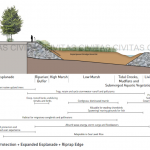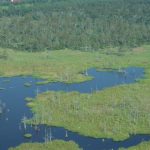
Any New York City history buff can tell you how closely the city’s fortunes are intertwined with the rivers and estuaries that snake around the five boroughs. Manhattan alone has 32 miles of coastline, but public access to that waterfront has fallen under the shadow of expressways on both the east and west sides of the island.
In 2017, New York’s waterways are a shadow of what they once were, and that could spell disaster.

Growing up, I never knew what mangroves were. In fact, whenever someone mentioned them, I thought they were talking about mangos. But of course they’re not tropical fruit. They’re coastal plants that live in the transition zone between the ocean and land and offer a wealth of services for both people and the environment. They are crucial in the fight against climate change.

The effects of anthropogenic climate change – specifically sea-level rise due to ice melt and thermal expansion – are likely to threaten already vulnerable coastal wetlands in Louisiana according to a new study published in Nature Communications on Tuesday. The study was conducted by Climate and Society 2010 alum Krista L. Jankowski and colleagues at… read more

As it marches on, climate change will bring forth higher temperatures, more frequent and severe flooding and a greater level of unpredictability to the climate system. New York may seem resilient to climate change, but the modern Goliath has its weaknesses.







